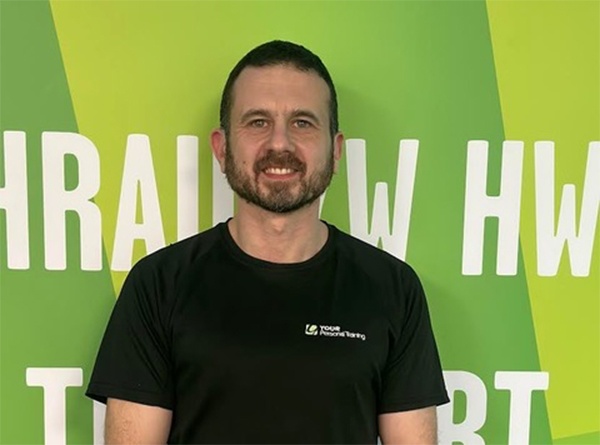Hello, I am Alex, a profoundly deaf PT and cochlear implant user.
After completing my Level 3 Personal Training at Cardiff and Vale College, I applied to YOUR Personal Training and became a PT at Llanishen Better Leisure Centre in mid-January 2023.
Applying the guidance and support on offer through YOUR PT, I’ve been steadily growing my client base, focusing mainly on middle-aged and older adults looking to improve their health and strength.
In the course of my work, I’ve come to realise that training sessions must be challenging enough, without being too exhausting or demotivating for the client. This balance, as many PTs like me have found, seemed elusive and tricky to strike at first.
That’s why, during the year I’ve worked as a PT so far, I’ve learned to use my skills to help clients achieve that compromise by focusing on the visual cues that come from them just before as well as during the training sessions.
Now, by the time the client has opened the gym door and greeted me, I have already observed their general wellbeing and made a mental note on whether or not they’re on top form for their training.
Then, during the session, I keep watching the visual cues from the client and constantly adjust the details of the training plan accordingly.
How is the client moving, both when they enter the gym and during the session? The first visual cue I use is the client’s body movements.
Are they moving as usual or are they faster or slower in their movements?
If they’re moving more quickly, for example, it could mean that they have some unspent energy to work off. So they need to release that extra energy, which I help them with by pushing them to run faster on a treadmill, or asking them to do a higher-intensity warm-up (for example with a battle rope or
slam ball).
Facial temperature …
We can see and notice the subtlest changes in the client’s facial ‘temperature’ through sweating or colour changes which are, as we know, indicators of rising blood pressure.
For example, if the client already looks very red 30 minutes into a session, it can tell us that it’s time to ease off the accelerator, to give them a lighter kettlebell for that swinging exercise, or skip the battle rope repeat at the end of the session and do jumping jacks instead.
General body and facial language are important!
Is the client slightly moody and agitated after doing box jumps?
OK - we can ask them about this.
Maybe they feel that the exercise has put too much pressure on their knees?
In which case we might, for example, rejig the session plan a bit, and start with the shoulder press instead of leg extensions to give the knees some rest.
To conclude …
I believe that every PT could potentially benefit from understanding and noticing their clients’ visual cues.
These are ultimately an essential part of the communication process during PT sessions and can make the client stay more motivated throughout their fitness journey.
Do not follow the programme religiously - OBSERVE YOUR CLIENT!
Book a complimentary PT session with Alex, contact him directly via his profile

